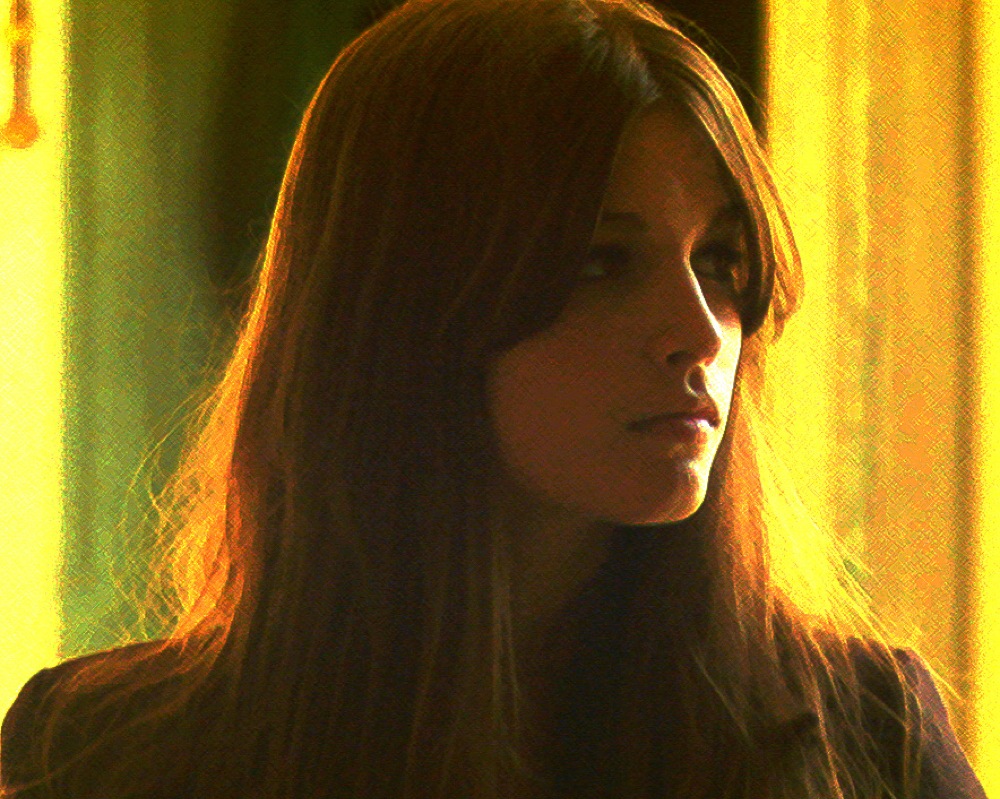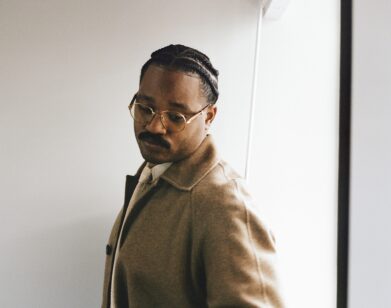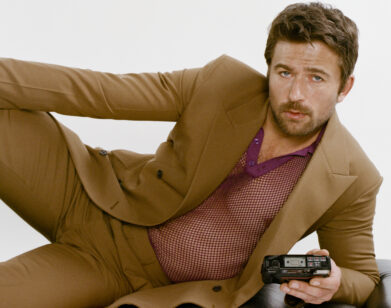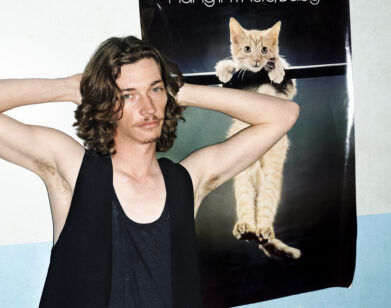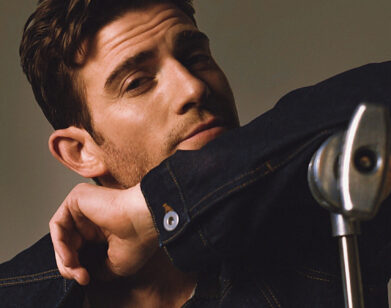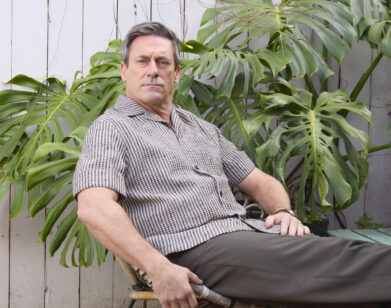The cinematographer behind all of your favorite underground films
“I don’t really have a motor inside that turns on and churns out energy to get work,” says New York-based cinematographer Sean Price Williams. The staggeringly prolific director of photography has racked up an astonishing 53 film and video credits in the last seven years alone. Williams, who recently turned 40, is known for his lyrical, hallucinatory, and lush images, and his work is frequently called out by critics for his use of light and the way he makes the faces of his subjects glow.
A former employee of the storied Kim’s Video and Music on St. Marks Place in Manhattan, the Delaware native is known for his work with filmmakers like Alex Ross Perry, Josh and Benny Safdie, Michael Almereyda, and Albert Maysles. He’s long been an underground hero for independent filmmakers and discerning cinemagoers, and a growing contingent of directors won’t shut up about him.
Perry, the 33-year-old writer-director whose dark comedies blend subversive wit with a literate sensibility and style, considers Williams his most important collaborator; Almereyda, the longtime independent film luminary, says the cinematographer’s influence has shaped his recent work; and actor Jason Schwartzman has cited Williams as an inspiration. His top 1000 films list—which includes movies by directors like Nicholas Ray, Walerian Borowczyk, Sergei Paradjanov, Sogo Ishii, Rainer Werner Fassbinder, Yuri Ilyenko, and Paul Morrissey—has circulated among cinephiles for years. (He made his first list in 2005 and updates it about every six months.)
A movie-crazy teen, Williams got his first camera at age 15 and shot his first feature in 1999 while he was a college student. After dropping out of college, he moved to NYC and began shooting all over town. Williams worked for Maysles as an archivist and cameraman for half a decade, beginning in his late twenties; he co-directed a 2011 movie called Eyes Find Eyes with a then 17-year-old Alma Jodorowsky (Blue is the Warmest Color); and he served on a jury at the Locarno International Film Festival in 2016, alongside innovators like Dario Argento.
We met with Williams recently at a pub with the cast and crew of a new project, just after they’d wrapped the first day of filming in Brooklyn, and followed up by phone on a Saturday evening, after the cinematographer worked an all-night shoot. Williams’ breakneck pace is evident in the impressive array of films he’s worked on that will soon be released, one after another. The Safdies’ new movie Good Time (starring Robert Pattinson), which Williams shot, opened in theaters last week. He also served as cinematographer on Almereyda’s Marjorie Prime, which opens this Friday; Nathan Silver’s Thirst Street, out in September; and Perry’s Golden Exits, which comes out later this year.
FLASH DECISIONS: How do I decide on projects? They decided on me, in the beginning. When I wake up, I just kind of think about how to be lazy, and so it’s been people being aggressive to get me, those are the jobs that I’ve done. I’ve never reached out for one.
And then I work with my friends. I’ve known Nathan [Silver] for 12 years, the Safdies I’ve known for 10 years now, and Alex Perry I’ve known for 12, 13 years. Almereyda—he was a Kim’s customer, and I always respected his taste. He could have had a great and easy career, but he always does something transgressive and interesting with his movies, in the form or the content.
There’s a lot of repeats, because I like working with the same people again and again. We become friends. It’s rarely the scripts [that make me choose a project], and often I don’t read the scripts until the last minute.
BAND OF OUTSIDERS: I’m not an automatically generous person. I encourage people because I think they might make a good movie. I’m really not happy with the people that have been making movies, so I want to help new people make movies. It’s as simple as that.
GREAT EXPECTATIONS: I like working with first-time directors because they’re unrealistic and unreasonable, and we get pushed into ideas that anybody with experience would have thought they needed more money for or would have just simplified. The job I did in Cambodia is one that most people probably would have thought twice about. We were on these little boats, shooting 35mm, and the whole thing was just crazy. It seemed inevitable that one of us was going to end up in the water—or the camera. [The impulse to help first-time directors]—I have to hold onto that. I think that’s the only thing that makes me relevant.
MASTER OF MOOD: I don’t always necessarily do the most flattering things for actors. I’m interested in the atmosphere more than almost anything else. With Alex [Ross Perry], we have references, always. We’ve seen so many movies together and we know each other’s taste, and it’s very easy. We move very quickly. We rip off Roman Polanski a little bit in every movie. In Listen Up Philip, the activity on the roof for the shot of Ashley [brooding during a voiceover] was not exactly choreographed. The sun was setting. It was really very chaotic. We only had 10 minutes, so we just brought everybody up from downstairs. And all of a sudden, there was that woman running around in that sparkly dress, and I said, “Oh my God, how lucky.” We did it three times, and each one was wonderful. That was a shot Alex specifically wanted. It’s probably one of my favorite moments in the movie. If you take your time when you’re making these things, and you don’t panic, you’re gonna get it. Every day there’s a shot that’s great that surprises me on these films. And they’re rarely the ones that I really was belaboring.
MUTUAL APPRECIATION: I don’t know what my relationship was with [Albert Maysles], but there was something there that was like mentorship. There was a real connection. We shot together for five years and I was always trying to absorb some of his organic sense of when to move [with the camera]—that was the greatest gift I got from watching him. As old as he was getting—his eyesight was really not so good—he still knew where to point the thing. He surprised the hell out of me. I saw him shoot some dance thing very, very, very close to the end of his life. I just saw a little of it, and it was unreal.
We had a real fan club for each other. We had some very special moments where we went out to shoot together. He would watch what I would do and show me what he would do, just a lot of sweet things like that. His sense of humor is the thing I thought about the most when he passed away—just how much fun we had, not just shooting, but also traveling.
He comes from a working-class background. He and his brother were trying to do something against all odds. Deep down inside, I still get very excited to see somebody come from nothing and go somewhere.
HUMBLE BEGINNINGS: My dad was a mechanic. My mom worked in a factory. It was irresponsible of me to decide to be an artist of some sort. I went to the state school for a couple years but didn’t graduate. I dropped out and moved to New York. When I was at [University of Maryland, Baltimore County], I had a new credit card and I was working in the film equipment department with the cage and all the film gear, so I would just rent out the cameras to myself at night and shoot film that I bought with my credit card. That’s how I learned everything, and then I paid for it later.
FAVORITE FACES: You know, a major part of [the draw of movies] was the pretty girls. My mom was always really into actors. She was into Klaus Kinski for some weird reason. I was 11 when we watched The Man Who Fell to Earth (1976) with David Bowie and also Last Tango in Paris (1972) with Brando. I would watch anything with Dirk Bogarde. Laurence Harvey. Alain Delon.
And then the actresses were all these Europeans: Jacqueline Bisset because of Day for Night (1973); Claudia Cardinale; Delphine Seyrig; Monica Vitti; [Fassbinder actress] Hanna Schygulla; and I was crazy about [Ingmar Bergman actress] Bibi Andersson. Diane Lane and Emmanuelle Beart were contemporary loves—though this is when Pamela Anderson and Jenny McCarthy were really pretty still, so I can’t pretend to be so honorable with my taste.
COOL COLLABORATORS: Alex has an amazing amount of assurance and confidence and some ego, so he can get a lot done in a day. I love all the actors he works with. That’s one of his processes—and this is true with a lot of guys I work with, the Safdies too—picking people you want to spend time with. Either they’re going to entertain you, they’re going teach you something, or they’re just good company. [Nathan Silver] and I made a fun movie last year called Thirst Street. It had everything stacked against it: I didn’t really want to work in France, I didn’t like the script, and I had never worked with Nathan. We’re friends, but we pick on each other, and I didn’t know how it was going to work out, but the experience was really harmonious and beautiful. I really hope Mike B [Michael M. Bilandic] gets a sidebar somewhere and they show all his movies because people would have a lot of fun. I love his writing. The scripts are all really fun to read, they’re about something, and the spirit of direct communication in making the films is great.
CHLOË SEVIGNY: I’m not sure what I meant by saying that shooting her was humiliating. I’ve known her for a really long time and we never worked together. We were a little bit nervous about what it was going to be like, and then she gave a great, great performance in Golden Exits. I’d like to shoot with her as a director. I think she’s probably going to be a really strong director and she’s going to make really good movies if she keeps on doing that. She’s such a smart girl. It’s ridiculous. Good taste too.
HIGHLIGHT REEL: My favorite movie that I shot is one you can’t really see. It was shot in Okinawa in 2009. It’s called Kuichisan. I don’t even have a copy. [Director Maiko Endo] is one of my best friends in the world, but she likes that you can’t see it, I think. It’s a beautiful movie. I was completely puzzled when we were making it. I know some people who have seen it, who didn’t know me when they saw it, and they were really emotionally affected by it in some way, so I know it’s real—it wasn’t just me. Almost every scene in that movie is something I’m very proud of and that I love.
There are a couple of short films that I didn’t necessarily understand what they were about when we were making them, but now I love them—because they surprise me. There’s one called “Icarus” that I did few years ago, when I was in an emotionally desperate state of mind. I agreed to do it just to keep busy. And then I saw the film, and I really love looking at it. I watch it every once in a while at home. I don’t do that with very many movies that I’ve shot.
Thirst Street is another favorite. I loved working on it, and then I loved the movie. When I re-watched Frownland (2007) after almost 10 years, I couldn’t believe I worked on that movie. Again, I was just surprised by it. I really loved watching it. The new Safdies movie [Good Time] was the hardest work I’ve ever done, and that was true for all the people that worked on it. It was almost painful when we were making it, but there are scenes that are exhilarating. I’m pretty proud of that one too. But [afterwards], I don’t really think about the movies that I’ve worked on—like I have a list of my top 1,000 movies. There’s nothing I’ve worked on that’s anywhere close to that list. I still don’t feel like I’ve made a real movie yet.
A FINE ROMANCE: I’m not getting sick of movies. I got a little bit lost for a couple years, but it’s all back now. I just got lost in my own turmoil, my own collapses and calamities. It had nothing to do with movies. Music got me through those things—I started cheating on movies with music, but now I love it all.
I don’t think it takes more for a movie to make an impression on me now. I’m more generous with some movies than I would have been—like the first two Hangover movies (2009, 2011) and War Dogs (2016) by Todd Phillips. The old me would have hated those immediately. Now I can see that despite the bad music choices, his movies have an energy that I think is great and I like his casting.
I watch so many old, really pretentious artsy movies that I just love. We were just watching [Brazilian director] Glauber Rocha. He’s constantly a source of energy. And I just watched The Lovers on the Bridge (1991) again. There are Godard movies that I’m still not over. His last movie was one of his best movies in my opinion.
BLESSED STATE: I think about [friend and notable Kim’s Video customer] Bob almost every day. When I open my eyes each morning, I see my wall of books, and there are many, many, many books that I have because of him—like Henry Miller’s The Books in My Life (1950) and The Outsider (1956) by Colin Wilson.
Some people are on these paths where they resist being like anybody else. It’s so hard. Being a nonconformist doesn’t get you to some sort of heaven, or even to a comfortable place. It doesn’t get you girlfriends or boyfriends or friendship. It just makes you lonely. Bob was the loneliest man I knew. But he really had a good philosophy. He was a happy person. To be a nonconformist and happy—wow, that’s something.

